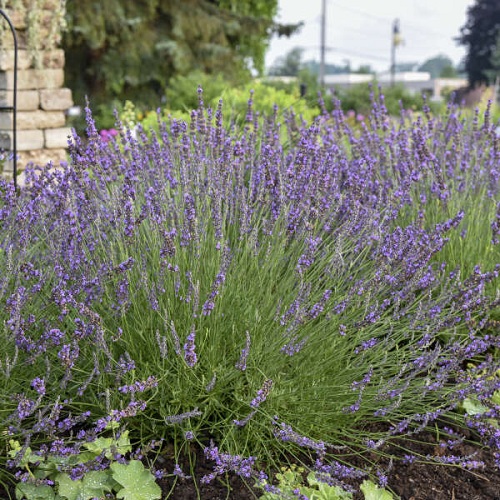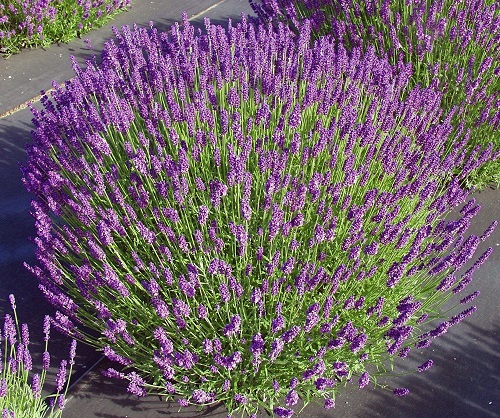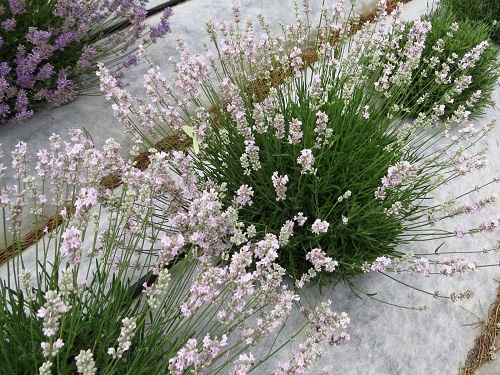Is Lavender a Perennial or Annual? Are you confused too? Don’t worry! We have all the answers you need to clear it out!
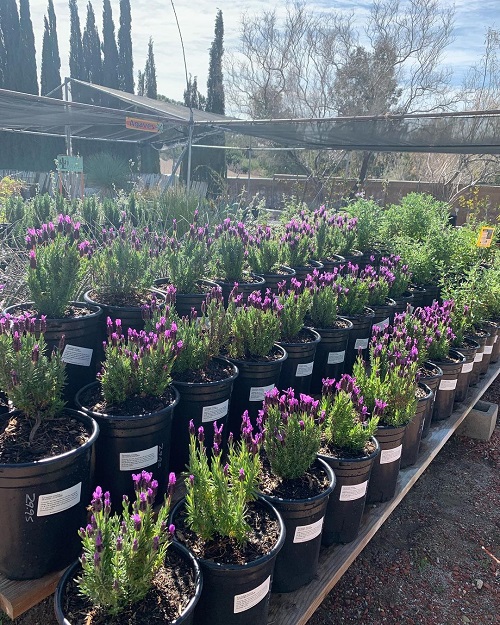
Is Lavender a Perennial or Annual? Don’t let this confuse you anymore, as we are here to clear all your doubts!
Check out some really cool ideas on landscaping with lavender here
What is Lavender?
Lavender is a type of flowering plant in the genus Lavandula, which is part of the mint family. Despite having its origins in the Mediterranean, it is common throughout the world, including in Europe, the Americas, and Asia. The plant typically has purple or blue flowers and a distinctive, sweet aroma, which comes from the essential oils in its leaves and flowers.
One may find lavender in a large number of varieties that range over 450 and in about 47 species. Among these species, most of them can grow easily in USDA zones 5-10. However, few of them can even adapt to USDA zones 3-4.
Here’s all you need to know about growing Lavender
Is Lavender a Perennial or Annual?

Lavender is generally a perennial plant. However, it can also be an annual, depending on the region, climate, and variety. This means that it will regrow each year from the same root system.
It is also a woody shrub-type plant, meaning that the woody stems can survive for several years. Lavender can live for up to 10 years if properly cared for.
Find out the best Lavender varieties here
Growing Lavender as a Perennial
Till now, you might have understood that lavender is a perennial plant – which means that it will grow and flower year after year. However, this does not mean that lavender will live forever. In fact, the lifespan of a lavender plant is usually around 10 years. After this time, the plant will start to decline and may need to be replaced.
The reason why lavender is considered a perennial plant is because of its ability to survive the winter months. Lavender is a hardy plant that can withstand cold temperatures and frost.
However, it is important to note that not all varieties of lavender are hardy. Some varieties are better suited for colder climates than others, so it is important to choose the right variety for your growing conditions.
Is It Possible To Grow Lavender In Tropics? Click here
Growing Lavender as an Annual
Lavender is a perennial herb known for its fragrant blossoms and foliage, but it can also be grown as an annual in areas with hot, dry climates.
Some gardeners favor growing lavender as an annual plant because it enables them to test out various cultivars and growing methods on a yearly basis. The choice of whether to grow lavender as a perennial or an annual ultimately comes down to your own preferences and growing circumstances.
Look at the Best Purple Houseplants here
Best Perennial Lavender Varieties
1. English Lavender
Botanical Name: Lavandula angustifolia
USDA Zones: 5-10
English lavender is one of the most popular and widely grown lavender varieties. It is a hardy plant that produces beautiful spikes of fragrant, purple-blue flowers.
Learn about Growing Lavender from Cuttings here
2. French Lavender
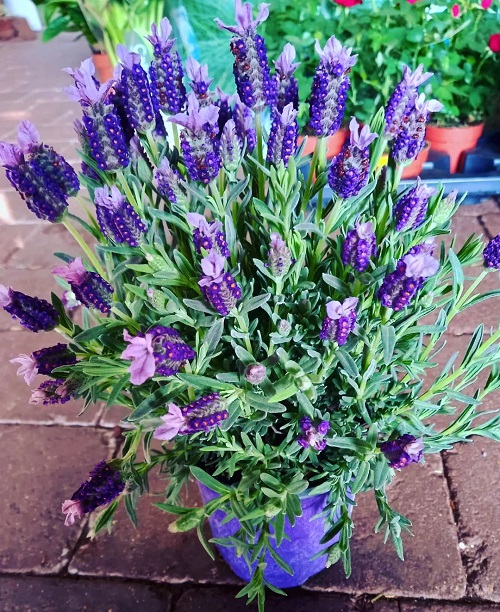
Botanical Garden: Lavandula dentata
USDA Zones: 8-11
French lavender is often grown for its decorative value. It has unique, cone-shaped flower heads with colorful bracts that bloom in early summer.
3. Spanish Lavender
Botanical Name: Lavandula stoechas subs. pedunculata
USDA Zones: 8-10
Even though Spanish lavender is a less popular lavender variety, it is still quite beautiful. It produces dense clusters of flowers in shades of pink, purple, or white.
4. Lavandin
Botanical Name:Lavandula x intermedia
USDA Zones: 5-9
Lavandin is a hybrid lavender variety that is a cross between English and French lavender. It has long spikes of fragrant flowers in shades of purple, pink, or white.
Find out the Best Flowering Houseplants here
5. Hidcote Lavender
Botanical Name: Lavandula angustifolia ‘Hidcote’
USDA Zones: 5-9
It has a low-growing habit and is ideal for growing in borders, rock gardens, or as a low hedge. Hidcote lavender prefers a sunny location with well-drained soil.
6. Portuguese Lavender
Botanical Name: Lavandula latifolia
USDA Zones: 6-8
This type of lavender is characterized by its distinctive tuft of brightly colored bracts at the top of each flower spike. The bracts are typically purple, pink, or white.
7. Phenomenal Lavender
Botanical Name: Lavandula intermedia ‘Phenomenal’
USDA Zones: 5-9
It is a hybrid developed by the breeders at the U.K.’s W.S. Tyler & Sons nursery. It has a strong, sweet scent and produces an abundance of fragrant, long-lasting flowers.
Check out How to Care for Lavender in Winter here
8. Munstead Lavender
Botanical Name: Lavandula angustifolia ‘Munstead’
USDA Zones: 6-9
Munstead Lavender is an English Lavender variety bred by Gertrude Jekyll in the early 1900s. It is a compact and bushy shrub, reaching heights of 20 to 24 inches.
9. Vera Lavender
Botanical Name: Lavandula angustifolia ‘Vera’
USDA Zones: 5-10
It is a compact, evergreen shrub with fragrant, lavender-colored flowers that bloom in early summer. Its leaves are gray-green and lance-shaped, and it is hardy in USDA zones 5-9.
Here’s everything you need to know about growing lavender in pots
10. Sensational Lavender
Botanical Name: Lavandula x intermedia ‘Sensational’
USDA Zones: 5-8
It is an easy-to-grow variety that features unusually large flower spikes on a compact form, with thick stems and silver foliage. Its foliage is also fragrant.
11. Nana Alba Lavender
Botanical Name: Lavandula angustifolia ‘Nana Alba’
USDA Zones: 7-10
Nana Alba Lavender is a compact, dwarf French Lavender variety. It is characterized by its dark purple-blue flowers and silvery-green foliage.
12. Little Lottie Lavender
Botanical Name: Lavandula angustifolia ‘Little Lottie’
USDA Zones: 5-10
It is a hybrid of English and French lavender. The plant has a compact, mounding growth habit and produces fragrant, light purple blooms from mid-summer to early fall.



